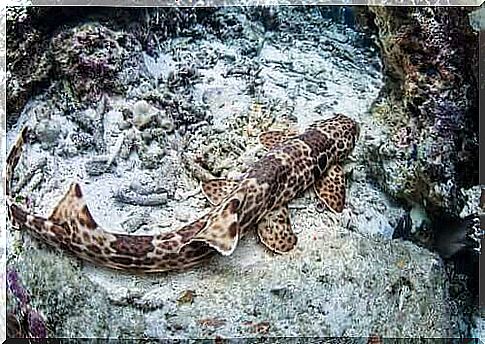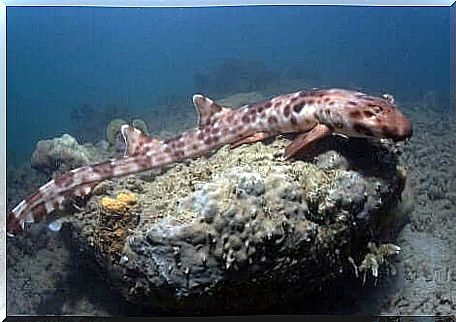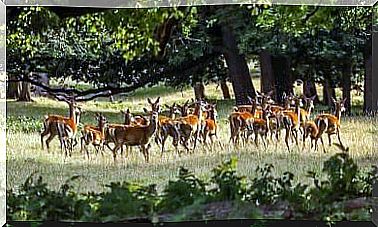Wandering Sharks: Sharks That Can Walk On Land

Sharks have inhabited our planet’s waters for hundreds of millions of years. During these long periods of time, some species have changed due to evolution. Recently, however, scientists discovered some extraordinary species: walking sharks.
Some people believe that there will be no more new species to discover. The truth is, however, that the biodiversity of our planet always provides new surprises. In fact, experts estimate that we still have to identify about 86% of the species living on land and 91% of the species living in the sea. Since marine animals are very difficult to observe, we know little about them accordingly.
For this reason, it is always surprising when scientists manage to discover and identify new species. As in the case of wandering sharks, for example . Currently, 9 species of these animals are known to live in the waters of New Guinea, Northern Australia, and Eastern Indonesia.
All of these species belong to the genus of epaulette sharks. The members of this family of shallow water sharks spend their entire lives between the reefs.
Why are these sharks called “wandering sharks”?
These sharks use their fins to “walk” across the rocky bottoms of tropical waters. When observed, it is evident that their movements are much more like walking than swimming.
Wandering sharks move by using their anterior pectoral fins along with their posterior pelvic fins. This allows them to walk slowly and clumsily on the sea floor. In addition, they can even walk along coral reefs at low tide, out of the water. And it is this mobility that gives them an advantage over their prey at low tide, making them the main predators of the coral reef.
What are the characteristics of wandering sharks?
Wandering sharks are quite small; they become about 90 cm long. Their bodies are slender and cylindrical, with a ventral mouth and a long tail. The pattern on their skin varies depending on the species and consists of white speckled and dark spots on the animals’ backs.
Wandering sharks’ abilities to move around by running and to live in low-oxygen environments make them excellent predators. However, you should know that they are safe for humans. It is therefore completely unjustified to attack or even hunt migrating sharks.
The evolution of this species
Sharks are animals that appear to be trapped in time as they have barely changed over the past 400 million years. Therefore, the discovery of this species is a unique event. The explanation could be their isolation in tropical waters. They spend their entire lives there and rarely leave them to lay their eggs.
Experts believe that the different species of wandering sharks evolved after they moved away from their original population. In this way they have been genetically isolated in new areas and so, after millions of years of evolution, new species have evolved.

Wandering sharks are endangered
According to the Red List of Threatened Species, the members of this shark genus are endangered. However, scientists are not fully aware of the situation of wandering sharks as they know very little about the biology of these sharks.
The intensive fishing of wandering sharks and their catch for aquariums represent the greatest threat to these animal species. At the same time, the effects of climate change and the destruction of their habitat are other factors that threaten the continued existence of these species.
The destruction of their habitat could cause serious damage to the wandering sharks. Some of these species live in very small areas and they are firmly rooted in their habitats.
It is important that we fight to preserve all biodiversity – this also applies to the species that we have yet to discover. In this way we can continue to enjoy their beauty and observe animals in their natural habitat. Biodiversity is a precious commodity and not only enriches our planet, but also our lives.








